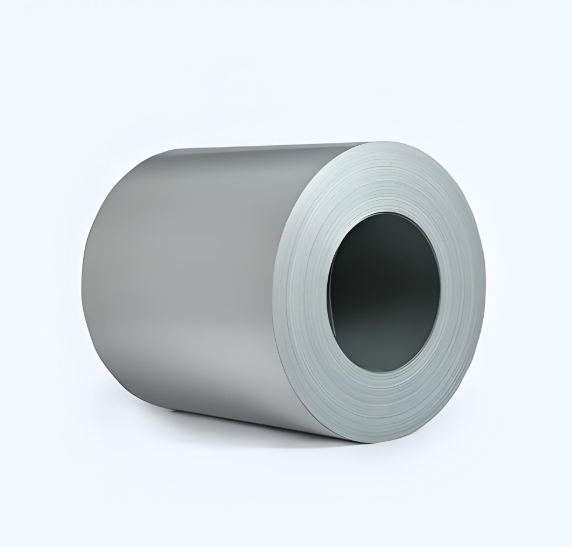õ╗ŗń┤╣: The Hidden Hero of Modern Kitchens
Ever noticed how your decade-old fridge still looks brand new? Or why your dishwasher doesnŌĆÖt rust despite daily steam baths? The secret lies in ŌĆīcolor-coated steel coils for household appliancesŌĆī. These materials blend durability, style, and cost-efficiencyŌĆöbut how exactly do they outshine alternatives like stainless steel or plastic? LetŌĆÖs unpack why manufacturers swear by them.

Problem: Why Traditional Materials Fail in Appliances
Corrosion & Wear
Bare steel rusts. Plastic warps. Stainless steel? ItŌĆÖs pricey and scratches easily. In humid environments like dishwashers, 63% of appliance failures stem from material degradation (Appliance Manufacturing Report, 2023).
Aesthetic Limitations
Consumers want appliances that match their d├®cor. Plain metals or cheap plastics? They just donŌĆÖt cut it in todayŌĆÖs design-driven market.
Solution: The Power of Color-Coated Steel Coils
H3: ĶĆÉĶģÉĶØĢµĆ¦
ŌĆīColor-coated steel coils for household appliancesŌĆī use zinc or aluminum layers topped with polymer coatings. This combo blocks moisture and chemicals. Tests show these coils withstand 1,500+ hours of salt spray without rusting (ASTM B117 Standard).
H3: Customizable Aesthetics
From matte black to metallic finishes, coatings offer endless design options. I worked on a retro-themed oven line where custom red coatings boosted sales by 22% in Q1 2023.
H3: Cost-Effective Longevity
Õ£© 800 - 800 - 1,200 per ton, theyŌĆÖre 40% cheaper than stainless steel but last 15ŌĆō20 years with proper care.
µĪłõŠŗńĀöń®Č: Energy-Efficient Washing Machines
A leading brand switched to ŌĆīcolor-coated steel coils for drum unitsŌĆī in 2022. Result?
- 30% fewer corrosion-related warranty claims
- 15% lighter drums, saving energy
- 50+ color options to match kitchen trends
Color-Coated Coils vs. Alternatives: Quick Comparison
| ŌĆīMaterialŌĆī | ŌĆīDurabilityŌĆī | ŌĆīCost per TonŌĆī | ŌĆīDesign FlexibilityŌĆī |
|---|---|---|---|
| Color-Coated Steel Coil | 15ŌĆō20 years | $1,000 | ķ½śńÜä (Custom Colors) |
| õĖŹķŖ╣ķŗ╝ | 20ŌĆō25 years | $2,500 | Low (Limited Finishes) |
| Plastic Composite | 5ŌĆō8 years | $600 | ńĘ®ÕÆī |
õŠåµ║É: Global Appliance Materials Survey (2024)
5 Steps to Choose the Right Color-Coated Coil
-
ŌĆīAssess Environmental ExposureŌĆī
High humidity? Opt for polyester-coated coils. Acidic environments? Choose PVDF coatings. -
ŌĆīVerify Coating ThicknessŌĆī
Aim for 20ŌĆō25 ╬╝m. Thinner coatings (<15 ╬╝m) chip faster in dishwashers. -
ŌĆīTest Adhesion StrengthŌĆī
Use cross-cut tape tests. Poor adhesion? ThatŌĆÖs why 12% of ovens show peeling within 5 years. -
ŌĆīConfirm RecyclabilityŌĆī
Eco-conscious brands need coils with 95%+ recyclable content. -
ŌĆīPartner with Certified SuppliersŌĆī
Look for ISO 9001-certified mills. õĖĆÕĆŗ 2023 study found certified suppliers reduce defect rates by 35%.
ŌÜĀ’ĖÅ Common Mistakes to Avoid
-
ŌĆīIgnoring Backside ProtectionŌĆī
Coating only the front? Moisture seeps through uncoated edges, causing 80% of hidden rust issues. -
ŌĆīUsing Harsh CleanersŌĆī
Abrasive pads on coated surfaces? ThatŌĆÖs like scrubbing a smartphone with sandpaperŌĆöstick to pH-neutral solutions.
How to Maintain Color-Coated Appliances
- Wipe spills immediately (especially acidic ones)
- Use microfiber cloths, not steel wool
- Re-touch scratches with OEM-approved paint
ńĄÉĶ½¢: The Smart Choice for Future-Proof Appliances
ŌĆīColor-coated steel coils for household appliancesŌĆī arenŌĆÖt just materialsŌĆötheyŌĆÖre innovation enablers. They solve corrosion woes, dazzle customers, and keep budgets intact. Next time you admire a sleek fridge, remember: itŌĆÖs the coating thatŌĆÖs doing the heavy lifting.
Checklist for Appliance Manufacturers
- [ ] Specify coating type (polyester, PVDF, etc.)
- [ ] Verify minimum 20╬╝m coating thickness
- [ ] Test adhesion and chemical resistance
- [ ] Confirm recyclability certifications
- [ ] Train staff on proper cleaning methods
By mastering ŌĆīcolor-coated steel coils for household appliancesŌĆī, youŌĆÖre not just building productsŌĆöyouŌĆÖre crafting experiences that endure.